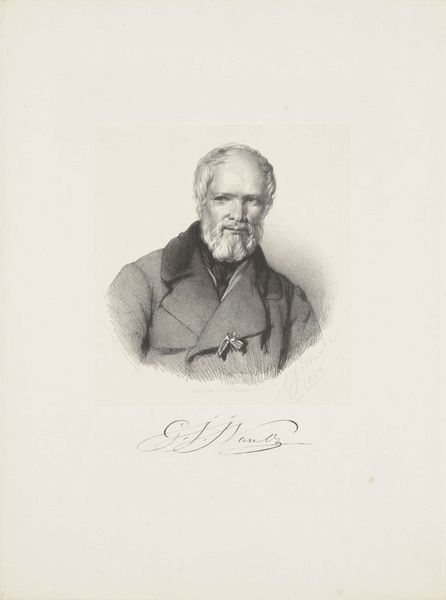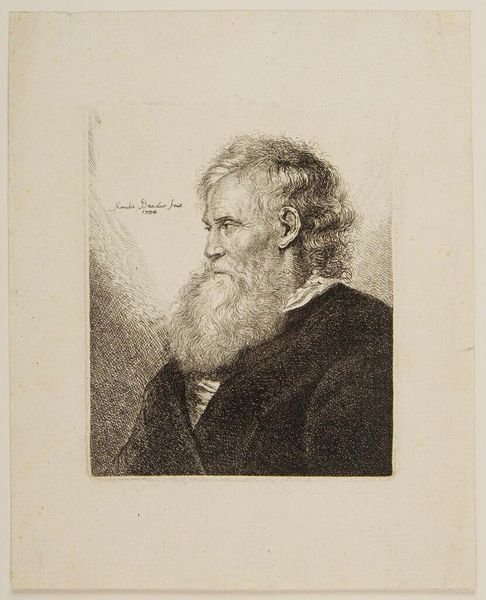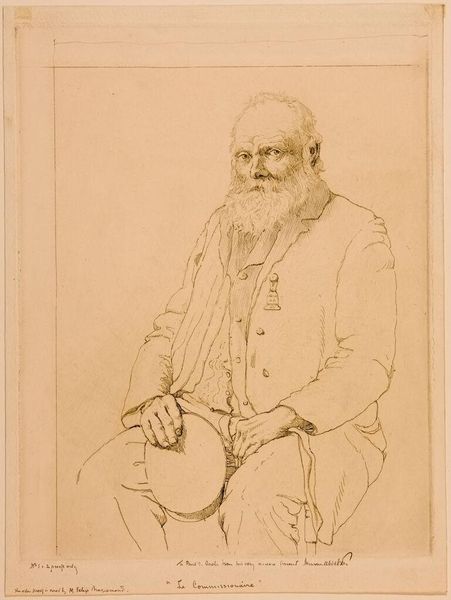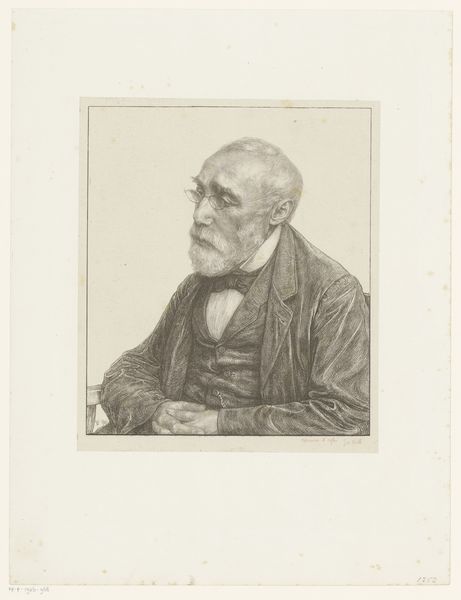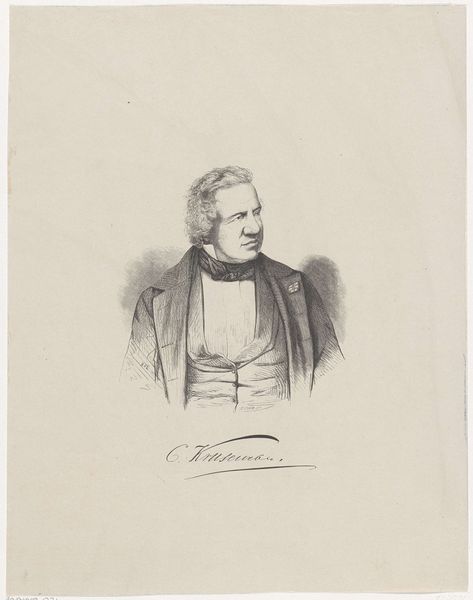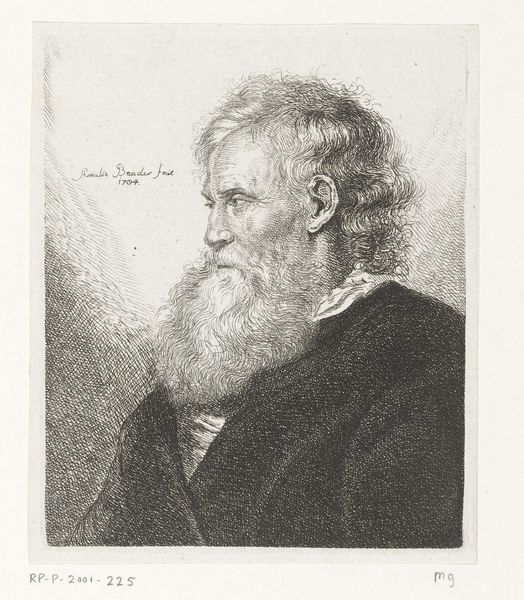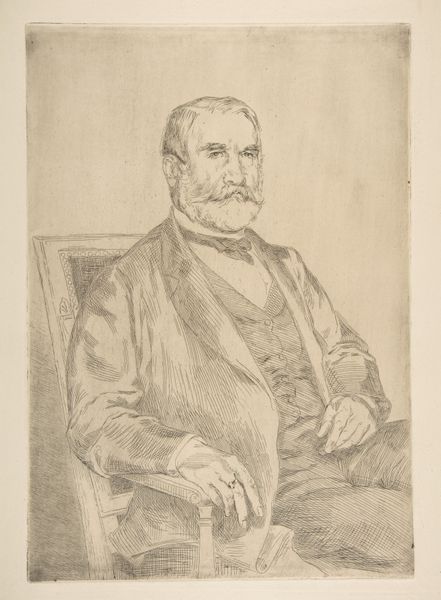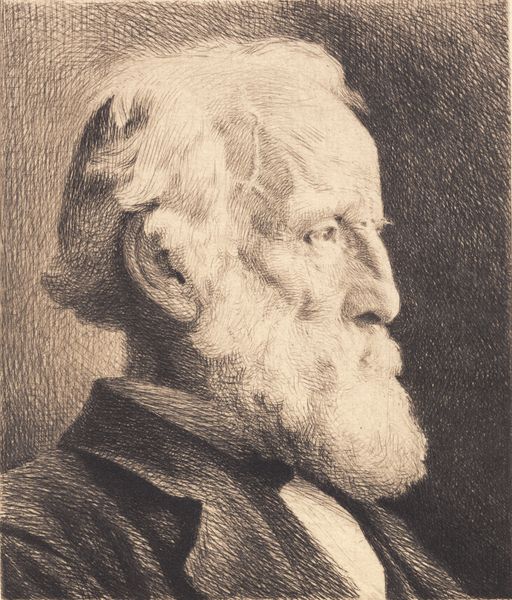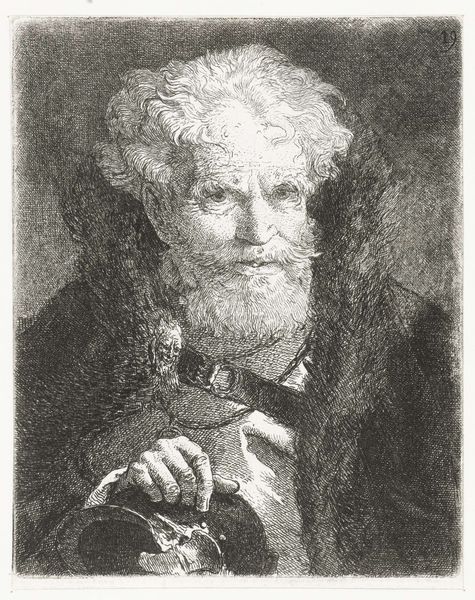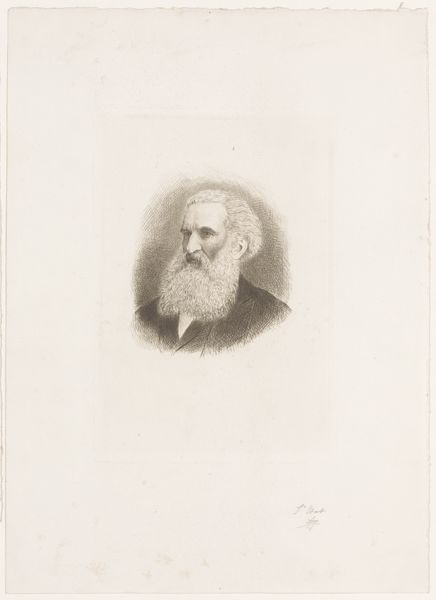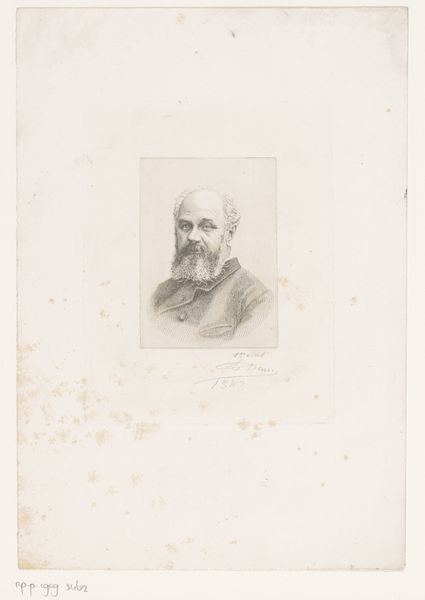
drawing, pencil, graphite
#
portrait
#
drawing
#
romanticism
#
pencil
#
graphite
#
realism
Dimensions: height 292 mm, width 206 mm
Copyright: Rijks Museum: Open Domain
Curator: This drawing, crafted by Adrianus Johannes Ehnle in 1849, offers us a glimpse into the visage of G.J.J. van Os. You can find this compelling portrait hanging in the Rijksmuseum. Editor: Immediately, I'm struck by the texture. Look at the paper itself, and then the meticulous rendering of the coat, the way the graphite creates a tangible sense of wool. You can almost feel the weave. Curator: It certainly invites a tactile interpretation, and beyond the surface, note the details like the medal pinned to Van Os's lapel. Medals often symbolize honor, service, and civic virtue—key values in 19th-century Dutch society. We can see them representing status and dedication. Editor: But it is all graphite and paper, and that medal, so subtly suggested, holds immense social weight! I wonder, was the choice of drawing over paint one dictated by material access? Perhaps graphite made portraiture attainable for a different class, one for whom paint and canvas were financially out of reach? Curator: That's a fascinating suggestion. Indeed, drawing occupied a crucial position in this era. Before photography, it often served to record likenesses in a tangible and accessible way. Moreover, its immediacy lent a particular kind of intimacy to the result. Editor: Exactly. And look at the shading. Notice the strategic blurring around the edges; see how this choice minimizes the labor necessary to render the whole scene! Was it simply a matter of efficiency or indicative of the commercial concerns for these works? Curator: It makes me consider how these types of choices and visual signifiers became part of our cultural shorthand to understand each other then, as much as now. What a drawing could signal in terms of class, values and perhaps even aspirations. Editor: To see the image stripped of some layers of artifice, to be confronted directly with the hand of the maker. That alone is deeply engaging. I have a renewed appreciation of Ehnle's portrait and of what is being asked from that pencil as he draws this important figure of Dutch society. Curator: I wholeheartedly agree! Now I’m even more aware of Van Os as part of our evolving collective memory, his identity subtly influenced and defined by visual and artistic language.
Comments
No comments
Be the first to comment and join the conversation on the ultimate creative platform.
